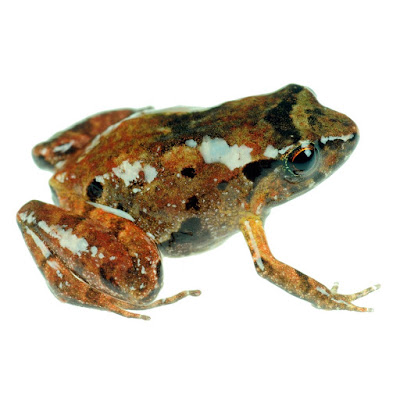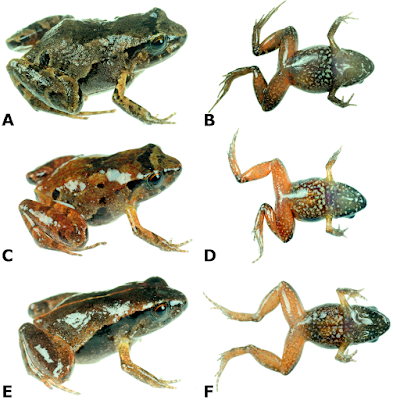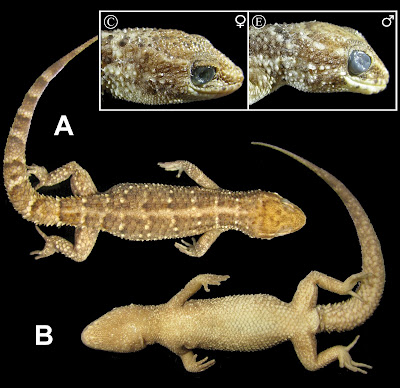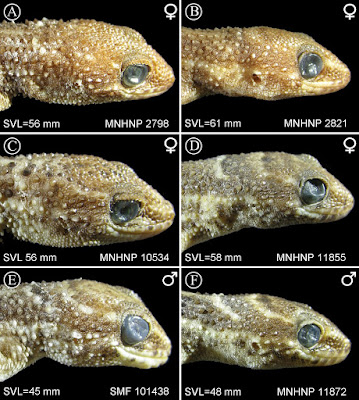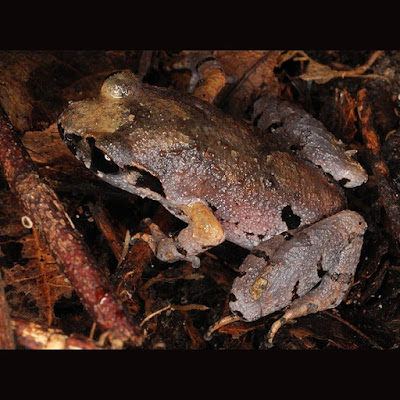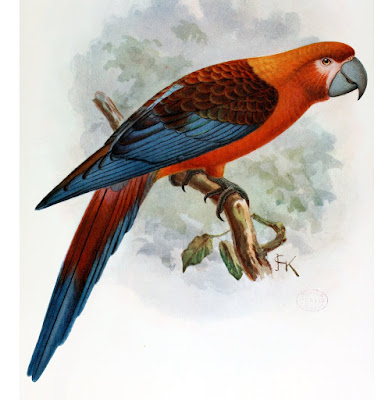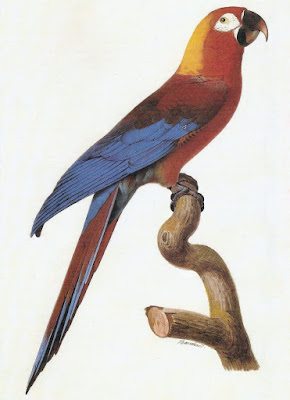[Most Recent Entries] [Calendar View]
Thursday, March 1st, 2018
| Time | Event | ||||||||
| 2:52a | [Entomology • 2018] [New or Rare Madagascar Tiger Beetles—17.] Description of Pogonostoma (Microstenocera) noheli sp. nov. and Redescription of P. (M.) flavomaculatum W. Horn (Coleoptera: Cicindelidae)
Abstract Pogonostoma (Microstenocera) noheli sp. nov. from central-eastern Madagascar is described as new to science. The new species was previously (in the monograph of the genus by Moravec 2007) partly confused and included within the externally very similar P. (M.) flavomaculatum W. Horn, 1892, a hitherto rare species based on a holotype only. A rectified redescription of the genuine P. (M.) flavomaculatum also is presented, complemented with external and internal diagnostic characters gained from a great number of recently caught adults. A revised key to Pogonostoma (Microstenocera) pusillum species-group and illustrations of the habitus, diagnostic characters and variability of these two species are provided. Keywords: Coleoptera, Cicindelidae, Pogonostoma, taxonomy, new species, Madagascar Jiří Moravec and Jan Vybíra. 2018. New or Rare Madagascar Tiger Beetles—17. Description of Pogonostoma (Microstenocera) noheli sp. nov. and Redescription of P. (M.) flavomaculatum W. Horn (Coleoptera: Cicindelidae). Zootaxa. 4388(1); 76–88. DOI: 10.11646/zootaxa.4388.1.5 | ||||||||
| 3:24a | [Herpetology • 2018] Psychrophrynella glauca • A New Species of Terrestrial-breeding Frogs (Anura, Strabomantidae) from the Montane Forests of the Amazonian Andes of Puno, Peru
Abstract We describe a new species of small strabomantid frog (genus Psychrophrynella) from a humid montane forest in the Peruvian Department of Puno. Specimens were collected at 2,225 m a.s.l. in the leaf litter of primary montane forest near Thiuni, along the Macusani–San Gabán road, in the province of Carabaya. The new species is assigned to Psychrophrynella on the basis of morphological similarity, including presence of a tubercle on the inner edge of the tarsus, and call composed of multiple notes. We also include genetic distances for 16S rRNA partial sequences between the new species and other strabomantid frogs. The species with lowest genetic distances are Psychrophrynella chirihampatu and Psychrophrynella usurpator. Psychrophrynella glauca sp. n. is readily distinguished from the three other species of Psychrophrynella (Psychrophrynella bagrecito, P. chirihampatu, and P. usurpator) by its small size, and by having belly and ventral surfaces of legs reddish-brown or red, and chest and throat brown to dark brown with a profusion of bluish-gray flecks. The new species is only known from its type locality. With the discovery of P. glauca, the geographic distribution of Psychrophrynella is extended to the Department of Puno, where it was no longer represented after the description of the genus Microkayla. Furthermore, the Cordillera de Carabaya is the only mountain range known to be home to four of the seven genera of Holoadeninae (Bryophryne, Microkayla, Noblella, and Psychrophrynella), suggesting an intriguing evolutionary history for this group in southern Peru. Keywords: Cloud forest, Frog, Bioacoustics, Carabaya, Ollachea, Leaf litter amphibian, 16S rRNA, Taxonomy, Holoadeninae, Terrarana Psychrophrynella glauca sp. n. Diagnosis: The new species differs from the three known species of Psychrophrynella by its unique combination of red coloration on ventral surfaces of legs and belly, and profusion of bluish-gray flecks on ventral surfaces of head, body, and legs. Morphologically, it is most similar to P. bagrecito in having a short fold-like tubercle on the inner edge of tarsus, a prominent ovoid outer metatarsal tubercle, discoidal fold present, an elliptical pupil, small size reaching ∼19 mm, and dark brown flanks in at least some specimens. It can be distinguished from P. bagrecito (characters in parenthesis in P. bagrecito) by having smooth skin on venter (areolate), dorsal coloration with broad markings (longitudinal stripes), snout short and bluntly rounded (snout moderately long, rounded in dorsal view and in profile), and ventral coloration in preservative brown with light gray flecks (white to cream with brown mottling). The new species can be distinguished from P. chirihampatu by having reddish-brown to dark brown coloration and bluish-gray flecks on ventral parts (ventral coloration yellow with reddish-brown or gray flecks), Finger I slightly shorter or the same length as Finger II (Finger I shorter than Finger II), inner metatarsal tubercle the same length of outer metatarsal tubercle (inner metatarsal tubercle at least three times the size of outer metatarsal tubercle), more bluntly rounded head (slender and longer head), smaller size reaching 19.8 mm in females (27.7 mm), and advertisement call having 26 notes and a fundamental frequency of 3,027 Hz (up to 68 notes, 2,712 Hz). The new species differs from P. usurpator by its reddish-brown ventral coloration (dull brown, gray or black with cream flecks), smaller SVL reaching 19.8 mm in females (SVL up to 30.5 mm), and by the fold-like tubercle on the inner edge of tarsus being short (long and prominent tubercle). Etymology: The specific name glauca is the feminine form of the Latin adjective glaucus, from the ancient Greek noun glaûkos, meaning “bluish-gray,” in reference to the bluish-gray flecks on the ventral parts of body and limbs. Distribution, natural history, and threats: The four specimens were found in the leaf litter along a descending ridge separating two creeks in the humid montane forest along the road from Thiuni to Ollachea. Sympatric species detected during our quick survey included Gastrotheca testudinea, Pristimantis platydactylus, and an unnamed Pristimantis sp. Much of the original forest vegetation has been replaced by cultivated fields and pasture along the road, but this remnant forest extended from nearly the side of the road to the upper ridge of the mountain. Further advance of agriculture, or clearing of the forest might threaten this species if its distribution is restricted to the Ollachea Valley. In absence of more detailed data regarding its extent of occurrence, and according to the IUCN Red List criteria and categories (IUCN, 2013), we suggest this species to be in the “Data Deficient” category of the Red List. Conclusion: We describe a new species of terrestrial-breeding frog of the family Strabomantidae, and provide evidence for its allocation within the genus Psychrophrynella. The new species P. glauca is only known from its type locality, similarly to most other small Holoadeninae known to occur at high elevations in the Andes of southern Peru and Bolivia. With our description we contribute to a better knowledge of the diversity of this group, and reveal the presence of four genera of Holoadeninae in the Cordillera de Carabaya of southern Peru, suggesting that phylogeographic studies of the Holoadeninae species of this mountain range may shed insights into radiation in this group. Alessandro Catenazzi and Alex Ttito. 2018. Psychrophrynella glauca sp. n., A New Species of Terrestrial-breeding Frogs (Amphibia, Anura, Strabomantidae) from the Montane Forests of the Amazonian Andes of Puno, Peru. PeerJ. 6:e4444. DOI: 10.7717/peerj.4444 | ||||||||
| 8:18a | [Herpetology • 2018] Homonota marthae • A New Species of Homonota (Squamata, Phyllodactylidae) from the central region of northern Paraguay
Abstract Homonota is a gecko distributed in central and southern South America with 12 species allocated in three groups. In this work, we performed molecular and morphological analyses of samples of Homonota from the central region of northern Paraguay, comparing the data with those of related species of the group: H. horrida and H. septentrionalis. We found strong molecular evidence (based on 16S, Cyt-b, and PRLR gene sequences) to distinguish this lineage as a new species. Morphological statistical analysis showed that females of the three species are different in metric characters (SVL and TL as the most contributing variables), whereas males are less differentiated. No robust differences were found in meristic characters. The most remarkable trait for the diagnosis of the new species is the presence of well-developed keeled tubercles on the sides of the neck, and lack of a white band (crescent-shaped) in the occipital area, which is present in H. horrida and H. septentrionalis. Nevertheless, in our sample, we found three specimens (one juvenile and two young adults) that exhibit the white occipital band. Thus, this character seems only reliable in adults of the new species. The new species is parapatric to H. septentrionalis, both inhabiting the Dry Chaco of Paraguay. Key Words: Dry Chaco, Gekkota, phylogeny, South America, taxonomy
Homonota marthae sp. n. Diagnosis: A species of Homonota assigned to the horrida group given its relationship (based on molecular evidence) with H. horrida, and by the color pattern composed of a vertebral and five to seven transversal clear lines appearing as a banded Homonota smilar to H. horrida and H. septentrionalis. Homonota marthae has a robust body, and prominently keeled tubercles disposed in four to eight longitudinal rows on the dorsum. .... Etymology: This species is named in honor of our indefatigable colleague Martha Motte, who is not only dedicated to safekeeping the herpetological collection of the “Museo Nacional de Historia Natural del Paraguay”, but also does a great job in providing selfless support to scientists that are striving to improve the knowledge of the Paraguayan herpetofauna. Habitat and distribution: Homonota marthae is known from the central area of the Paraguayan Dry Chaco in the Department of Boquerón (Fig. 5). The environment is a xeric forest with abundance of thorny vegetation and almost absence of a herbaceous stratum. Nevertheless, a more detailed analysis of museum collections is advisable for a better knowledge of the distribution of this species. This species is a dry forest inhabitant, but it is also frequently found in human dwellings. Talbot (1978) recorded the use of logs of Drunken tree (Chorisia speciosa: Malvaceae) as shelter by Homonota in the Dry Chaco, since the wood of this tree keeps high water levels. Additionally, Cacciali et al. (2007a) demonstrated the use of subterranean caves (usually armadillo burrows) by Homonota in several areas of the Paraguayan Chaco. Pier Cacciali, Mariana Morando, Luciano Javier Avila and Gunther Koehler. 2018. Description of A New Species of Homonota (Reptilia, Squamata, Phyllodactylidae) from the central region of northern Paraguay. Zoosystematics and Evolution. 94(1): 147-161. DOI: 10.3897/zse.94.21754 | ||||||||
| 9:37a | [Herpetology • 2018] Leptolalax rowleyae • A New Species of Leptolalax (Anura: Megophryidae) from Son Tra Peninsula, central Vietnam Abstract Morphological, acoustic and molecular analyses result in the description of Leptolalax rowleyae sp. nov., a new species of frog in the Megophryidae, belonging to the L. applebyi Rowley & Cao species group from central Vietnam. It differs from its congeners by a combination of the following morphological attributes: (1) adult SVL 23.4–25.4 mm in males and 27–27.8 mm in females; (2) presence of distinct dark/brown dorsolateral markings, including black spots on flanks; (3) pinkish milk-white to light brown chest and belly with numerous white speckles; (4) tympanum distinct; (5) absence of webbing or lateral dermal fringes on fingers and toes; (6) pectoral glands comparatively small (3.3–4.7% of SVL); (7) ventrolateral glands indistinct; and (8) iris bicolored with copper tint in upper half fading to golden in lower third of iris. The male advertisement call of the new species consists of 4–6 notes, lacking a distinct introductory note, with an average dominant frequency of 3.2–3.5 kHz. The description of the tadpole constitutes the first description of larval morphology for a member of the L. appleybi species group. Genetically, an uncorrected sequence divergence of 7.4% for 16S rRNA separates the new species from its two closest relatives, L. ardens and L. melicus in the L. applebyi species group. Keywords: Amphibia, Acoustics, Leptolalax applebyi species group, tadpole morphology, Son Tra Nature Reserve Luan Thanh Nguyen, Nikolay A. Jr. Poyarkov, Dzung Trung Le, Ba Dinh Vo, Hoa Thi Phan, Tang Van Duong, Robert W. Murphy and Sang Ngoc Nguyen. 2018. A New Species of Leptolalax (Anura: Megophryidae) from Son Tra Peninsula, central Vietnam. Zootaxa. 4388(1); 1–21. DOI: 10.11646/zootaxa.4388.1.1 | ||||||||
| 10:14a | [Ornithology • 2018] Ara tricolor • The Phylogenetic Position of the Extinct Cuban Macaw based on Complete Mitochondrial Genome Sequences
Abstract The Cuban Macaw Ara tricolor was a species of macaw native to Cuba and Isla de la Juventud in the Caribbean that became extinct in the 1860s. Morphologically it was similar to, but distinctively smaller than the large red macaws – Scarlet Macaw A. macao and Red-and-green Macaw A. chloropterus. A close affinity with the Scarlet Macaw has been suggested based on plumage similarities. In this study we use complete mitochondrial genome sequences to examine the phylogenetic position of the Cuban Macaw. Our results do not indicate a sister-species relationship with the Scarlet Macaw, but place the Cuban Macaw sister to the two red species and the two large green macaws, the Military Macaw A. militaris and the Great Green Macaw A. ambiguus. Divergence estimates suggests that the Cuban Macaw separated from this group approximately 4 million years ago.
Ulf S. Johansson, Per G. P. Ericson, Mozes P. K. Blom and Martin Irestedt. 018. The Phylogenetic Position of the Extinct Cuban Macaw Ara tricolor based on Complete Mitochondrial Genome Sequences. Ibis. DOI: 10.1111/ibi.12591 Guy M. Kirwan and James W. Wiley. 2013. The extinct macaws of the West Indies, with special reference to Cuban Macaw Ara tricolor. Bulletin of the British Ornithologists' Club. 133(2); 125-156. |
| << Previous Day |
2018/03/01 [Calendar] |
Next Day >> |


